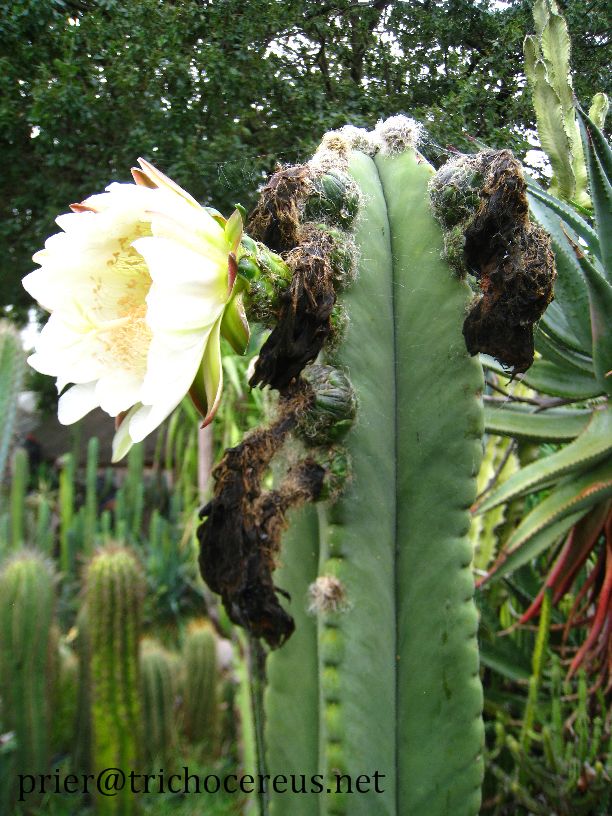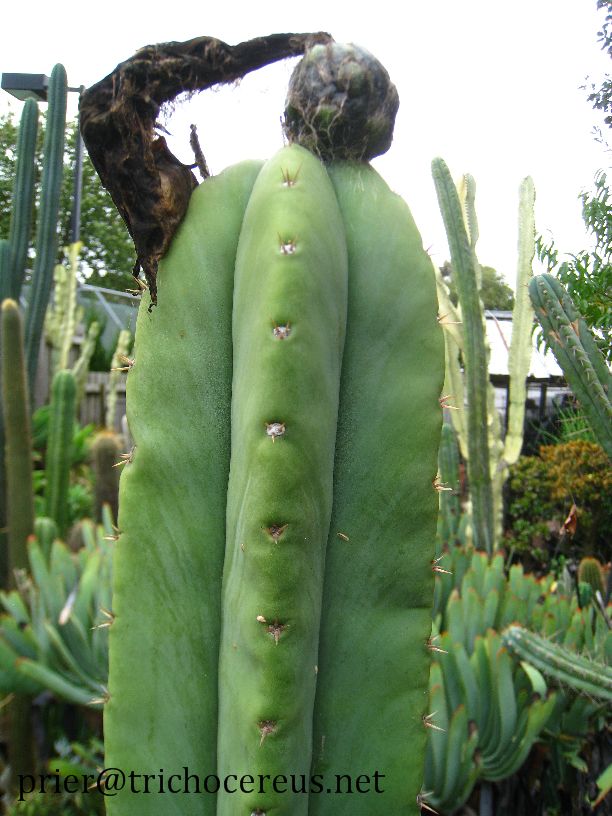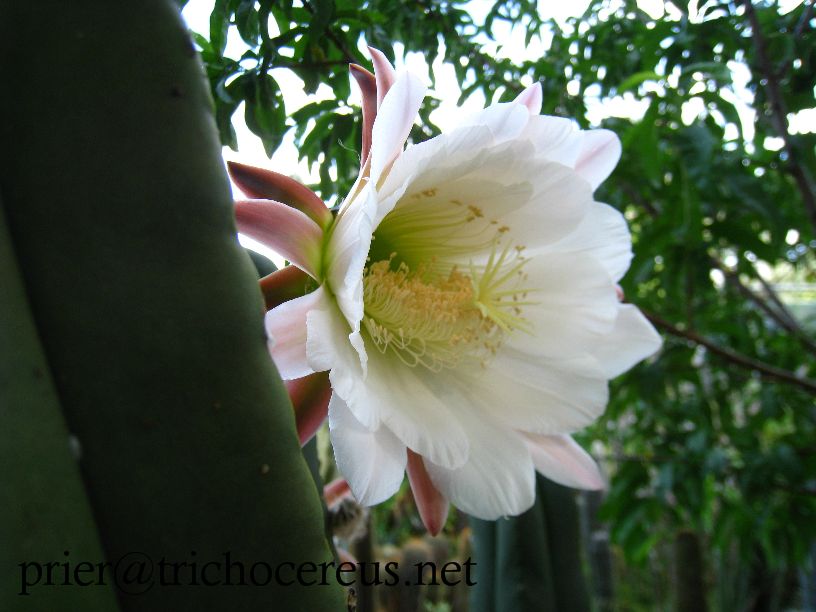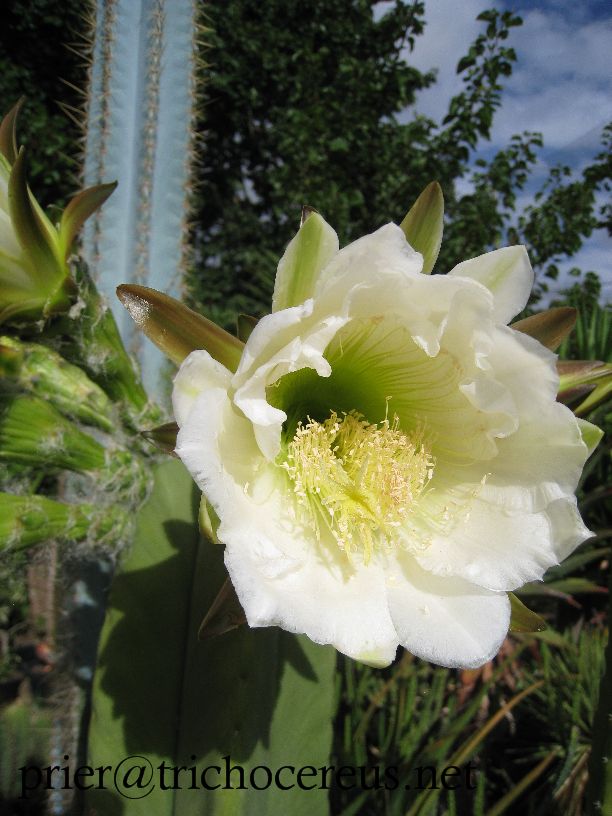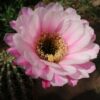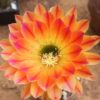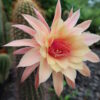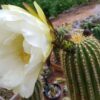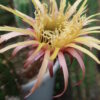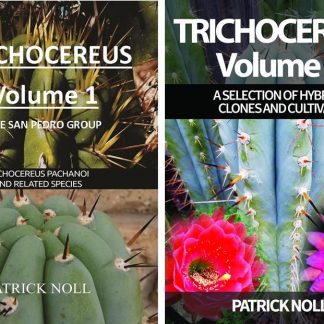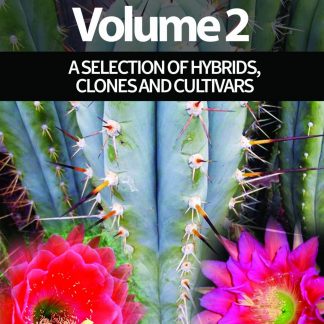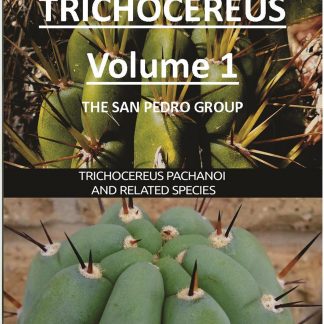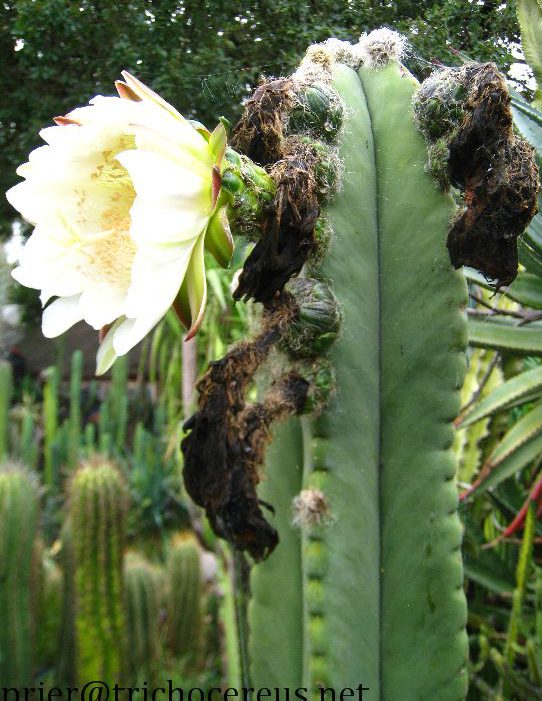
Trichocereus scopulicola, also known as Trichocereus scopulicolus or Echinopsis scopulicola is a columnar cactus from Bolivia. It was discovered and described by Friedrich Ritter. Its current status is unknown, but it may be extinct in nature.
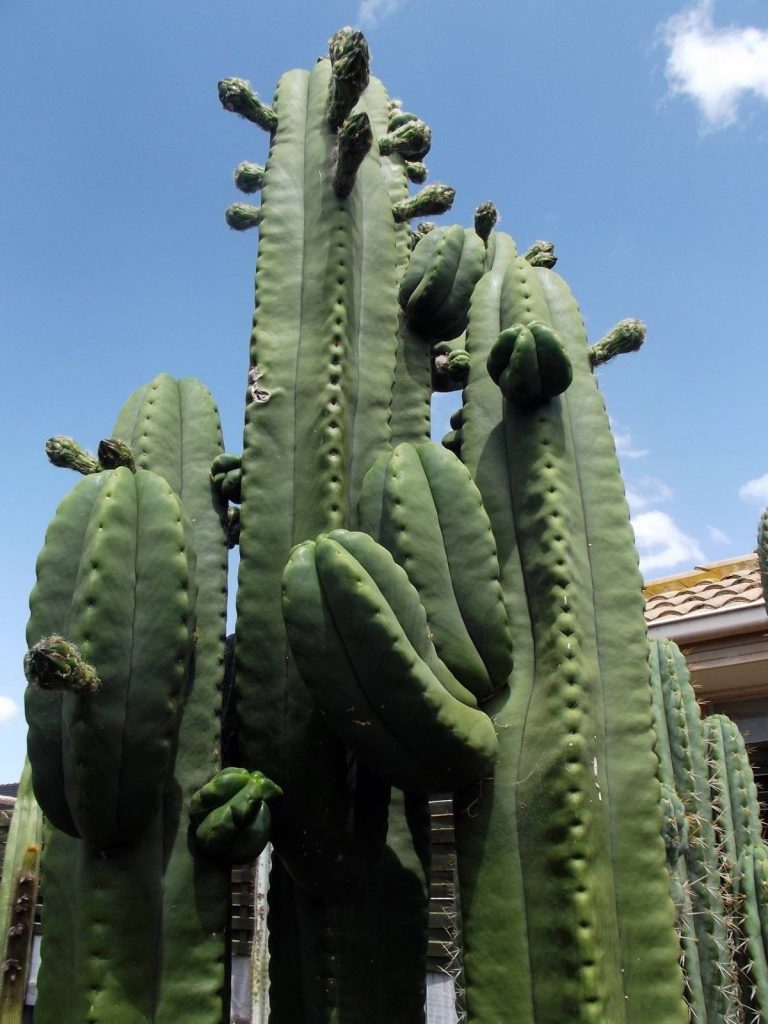
Trichocereus scopulicola FR991 (Rodni Kisar)
Synonyms of Trichocereus scopulicola:
Echinopsis scopulicola, Trichocereus cv. Super Pedro, Trichocereus scopulicolus, Trichocereus scopulicola NMCR, Trichocereus cordobensis, Trichocereus crassicostatus, Scop,
Origin of Trichocereus / Echinopsis scopulicola:
Trichocereus scopulicola was discovered by Friedrich Ritter during one of his expeditions to Bolivia in 1959. The location of the type is Tarija, Bolivia. More precisely, Ritter gave Tapecua as the location and assigned the collection number FR991 and sold seed of his discovery through his legendary Winter Seed lists. Because of that, he helped spreading the plant all over the world, despite the fact that Trichocereus sScopulicola is really rare in nature. There are very few collections of this plant in nature and I am always interested in obtaining seed from new scopulicola types. The plant grows in Tarija in the province O Connor. And no, this has nothing to do with Sarah Connor from the movie TERMINATOR. Trichocereus scopulicola grows in the cactus forests around the Department Tarija at around 1000-1500 meters.
Description of Trichocereus scopulicola:
Trichocereus scopulicola grows columnar like a tree and pups from the base. But it´s actually rare for this plant to produce numerous shoots and most plants don´t have any side shoots. Trichocereus scopulicola can get up to 4 meters tall though most specimens are smaller. The columns are between 5-10 centimeters in diameter and have a nice, dark green epidermis.
Ribs:
Trichocereus scopulicola can have 4-6 ribs though most specimens have five. The areoles are furrowed. The areoles are sunk in and have very little white fluff/wool on top of them. The areoles are rounded or oval and are between 1-4 mm long and 1-2 mm broad, which is very small for a Trichocereus. The distance between the areoles is between 15 and 30 mm. Areoles that form flowers have 4-5 mm diameter. Large, adult plants often lack the spines, while very young seedlings look remarkably similar to a Trichocereus pachanoi and can only be differentiated by the weird rib shape of Trichocereus scopulicola. Adult plants have (if they have any) 3-6 spines that are very small and up to 1.5 mm long. Seedlings have 6-7 ribs, areoles up to 2 mm in diameter and 3-5 mm away from each other, 7-14 needle-like spines (2-3mm long), of which two are central spines.
Flower of Echinopsis scopulicola:
Trichocereus scopulicola flowers from the apex but there are plants where the flowers come out from lower points on the plant. The flower is white and between 15-22 centimeters long. Trichocereus scopulicola is a night-flowering species but the flowers stay open until the late morning.
Fruit of Trichocereus scopulicola:
The fruit of Trichocereus scopulicola is green and can get up to 6 centimeters thick.
Friedrich Ritter considered this species to be very close to Trichocereus bridgesii, which is one of the plants that grow in the neighborhood of Trichocereus scopulicola. And it´s very likely that Tr. scopulicola is some kind of natural hybrid involving Trichocereus bridgesii or Trichocereus pachanoi.
In addition, Ritter wrote that Trichocereus riomizquensis is related to it, but not as closely related as Trichocereus crassicostatus is. These days, Trichocereus crassicostatus is generally seen as a synonym of Trichocereus scopulicola or Tr. pachanoi. So far, I´ve not been able to track a specimen down but they are certainly out there. If you grow one, let me know.
Cultivation of Trichocereus scopulicola:
Trichocereus scopulicola is similarly tough as Trichocereus bridgesii. The reason is simple; both come from Bolivia and are used to the same conditions. Bolivian Trichocereus species are very drought resistant, but can also deal with strong rainfalls in summer pretty flawlessly. However, they should not be watered when it´s cold and they prefer a purely mineral soil mix because that dries up a lot faster. During the hot summer season, they can be watered every few days when the soil has dried up again. Don´t water them when it´s cold or rainy because that can cause rot.
Winter protection and Minimum Temperature:
Scops are relatively hardy and can short night frosts of down to -5° Celsius and maybe even lower than that, but I would not test it out because low temps weaken the plants. The minimum average temperature should be around 10° Celsius and they should be completely dry over winter if you take the plants inside. If the get wet over a prolonged period of time, it can cause root rot or other infections.
Seed & live cuttings:
I get seeds every now and then and I know a couple of growers who actively breed with Scops. There sometimes are some available at SAB and the SAB forum. Besides, Misplant makes a couple Scop Crosses a year. This year, he made a pretty cool cross between a Scop and a colored Grandiflorus, which I can wholeheartedly recommend you because it might produce Scop seedlings with a colored flower.
Trichocereus scopulicola can be used as a grafting stock. It is a great stock that accepts graftings very easily.
Photos of Trichocereus scopulicola
Trichocereus scopulicola FR991 (above)
Trichocereus scopulicola ‘Super Pedro’ above
Sausage Plant x Trichocereus scopulicola _ Echinopsis scopulicola (Below)
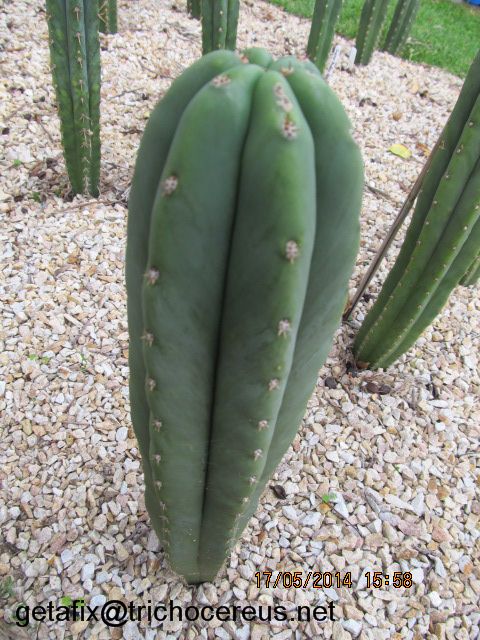
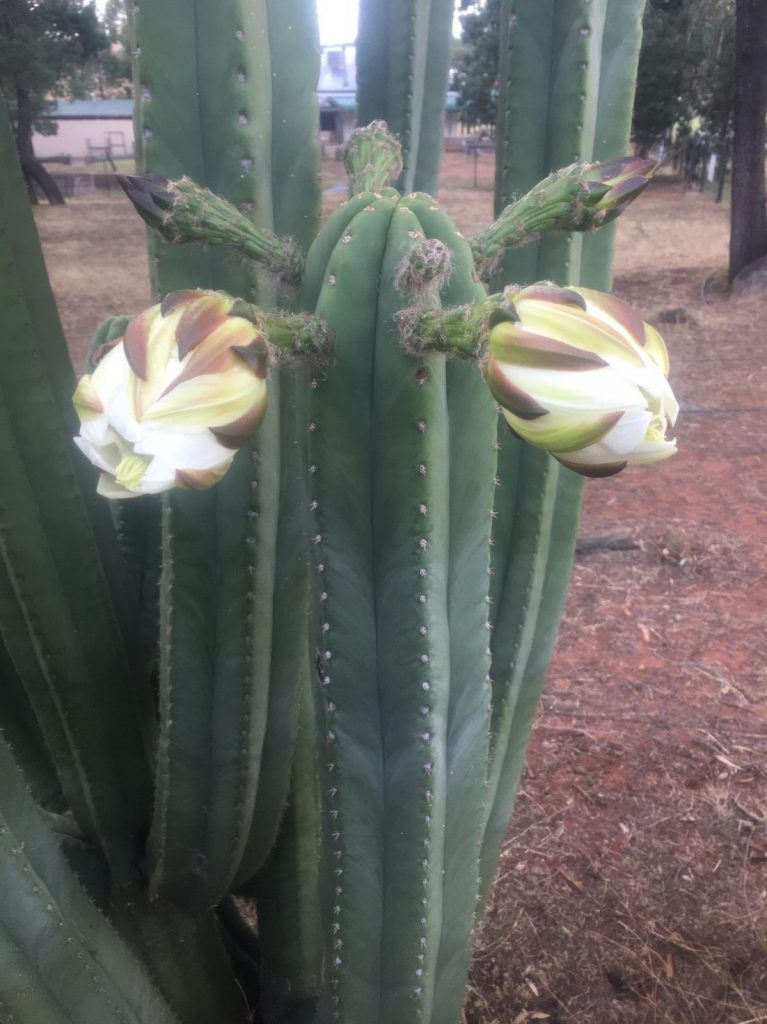
Trichocereus scopulicola ‘Cordobensis’ aka Trichocereus cordobensis
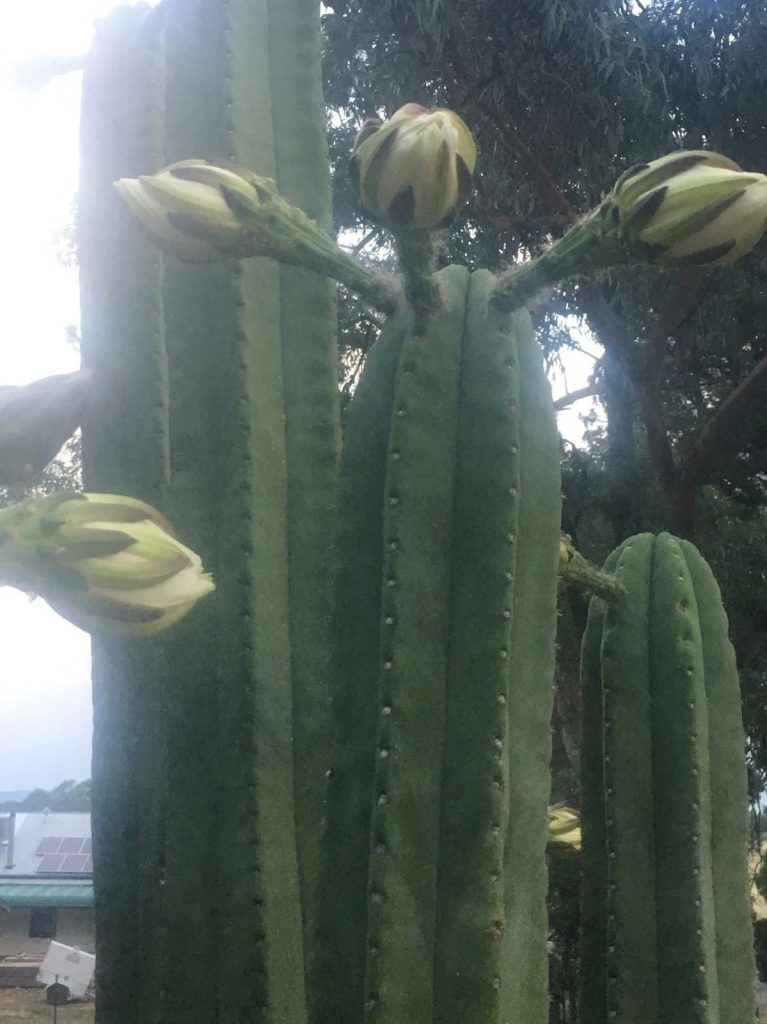
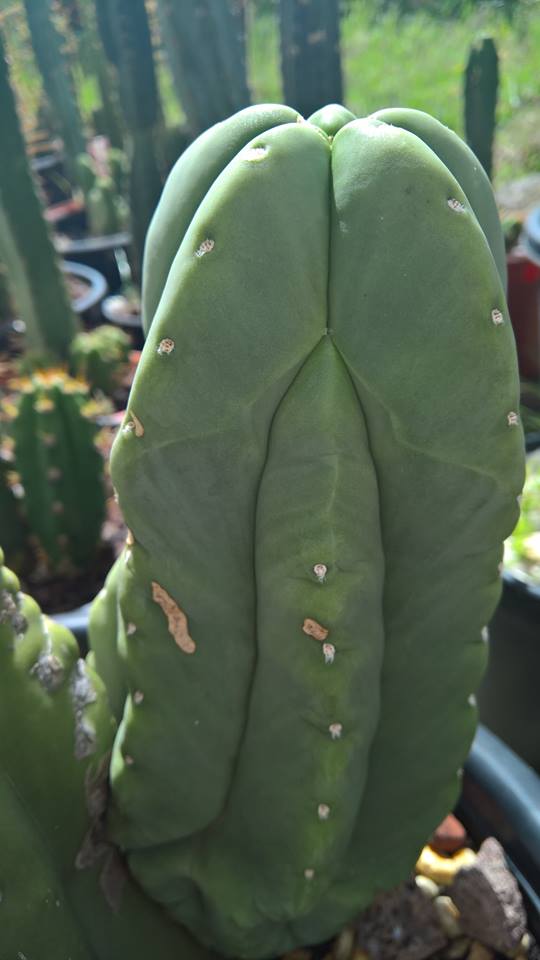
Trichocereus scopulicola (Jon Nicholls)
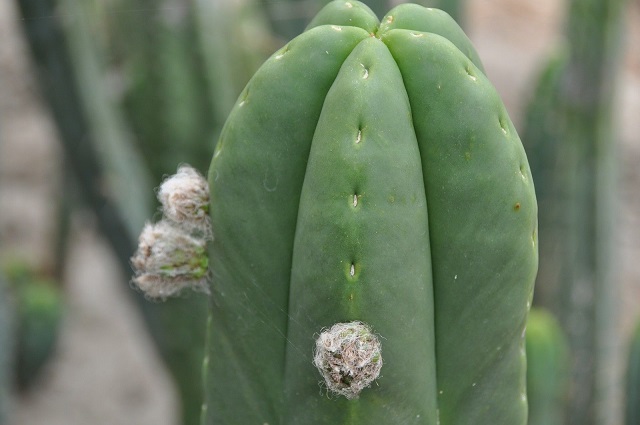
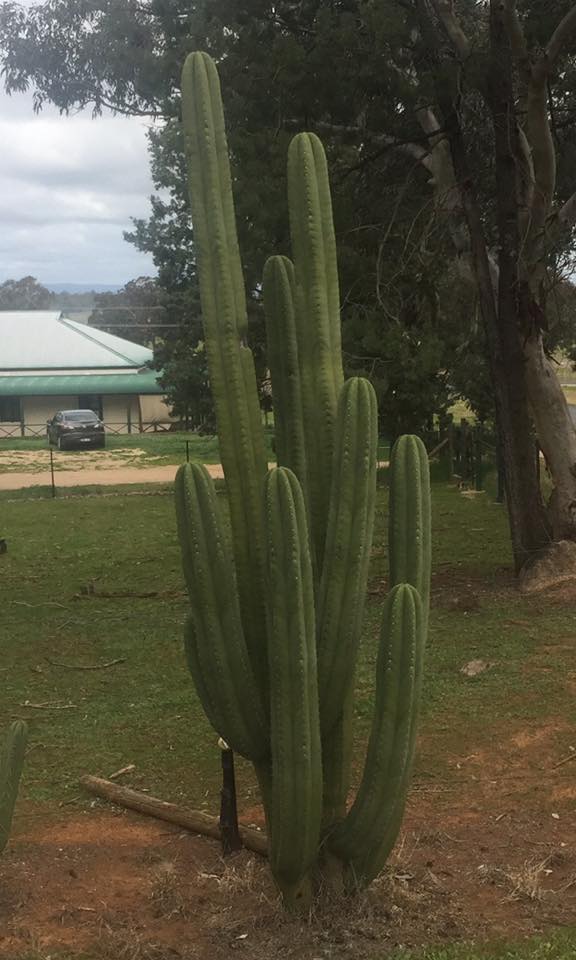
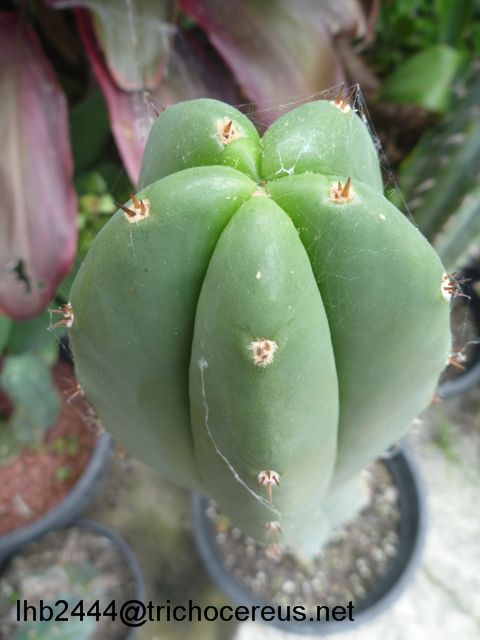
Trichocereus scopulicola ‘Super Pedro’ a hybrid by Cactus Country LHB2444
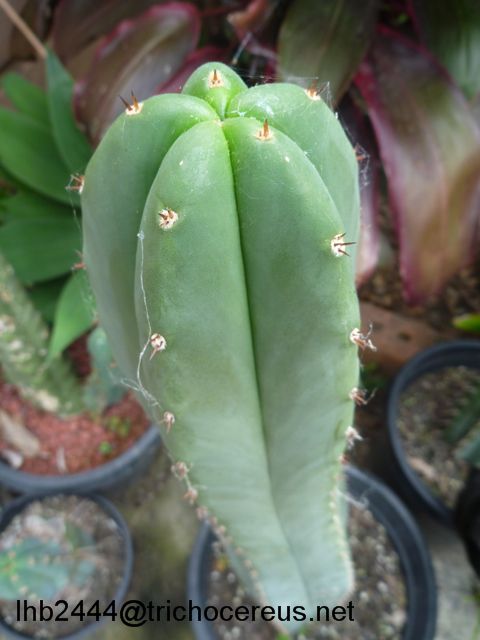
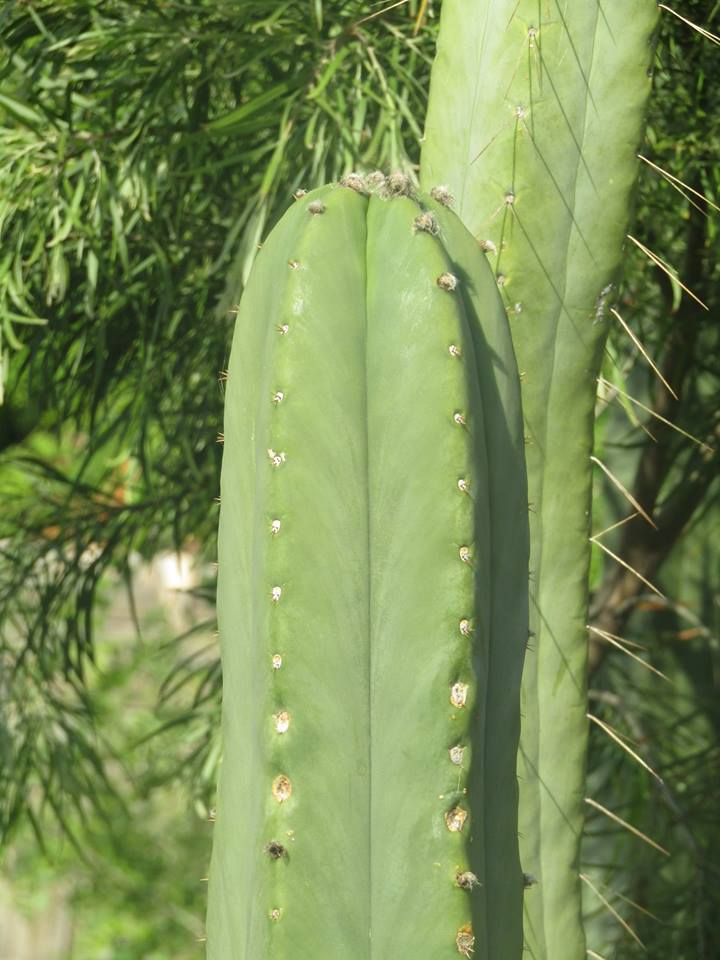
Trichocereus scopulicola ‘Super Pedro’ Echinopsis scopulicola (Rodni Kisar)
Original Description by Friedrich Ritter
TRICHOCEREUS SCOPULICOLA RITT., “Cactus” April 1966
Körper: Aufrechte Säulen, nicht oder nur gering vom Grund sprossend,
3-4 m hoch, 8-10 cm dick, dunkelgrün. Ri. 4-6, meist 5, fast höckerlos,
breit und stumpf, die etwas gewölbten Planken ca 3-4 cm breit, Trennfurchen
gerade. Ar. etwas eingesenkt, gering weißfilzig, rundlich oder
oval, 1-3 mm lang, 1 mm breit, 15 bis fast 30 mm freie Entfernung;
Blühareolen ca 4-5 mm Dm., rund, St. an großen Pflanzen fehlend oder
3-5, pfriemlich und nur ca 1 mm lang; Sämlinge haben 6-7 Ri., Ar. von
1-1,5 mm Dm. mit 3-5 mm freier Entfernung und 7-13 nadelförmige, weißliche
oder braune, 2-5 mm lange St., davon 1-2 zentral. Bl. meist nahe
dem Scheitel, zuweilen auch tiefer, 16-20 cm lang, duftend, nachts
öffnend, in den kühleren Morgenstunden noch offen. Frkn. grün, groß
gefeldert, Felder ca 1 cm Dm., oben auslaufend in grünliche dreieckige
Schuppen von 1-2 mm Länge, mit weißen, oben dazu auch schwarzen Wollhaaren.
N.-K. bräunlichweiß, tubisch, sehr eng um den Gr., ca 2 cm
lang, mit Nektar. Rö. darüber trichterig, 65-85 mm lang, innen und
außen hellgrün, die grünen Schuppen nach oben bis ca 25 mm Länge und
15 mm Breite an Größe zunehmend; Obergänge in die Krbl. rotbraun, Haare
sehr krauswollig, schwarz mit weiß. Stbf. unten blaßgrün, nach oben
gelblich, 7-9 cm lang, die des Saumes 4-5 cm lang; Insertionslücke
ca 4 cm; Beutel bräunlich. Krbl. 6-8 cm lang, 2,5-4 cm breit, mit
schmaler Basis, Enden gerundet mit oder ohne Spitzchen, nahe oben am
breitesten, weiß, die äußeren schmaleren weiß mit grünem Mittelstreif.
Gr. blaßgrün, 14-18 cm lang, wovon ca 2 cm auf die 12 hellgelben ausgebreiteten
Narbenlappen kommen. Fr. grün, 4-5 cm lang und dick, gefeldert
und bedeckt wie Frkn., wohlschmeckend, Sa. 1,8 mm lang, 1,3 mm
breit, 0,8 mm dick, fast nierenförmig, Testa glänzend schwarz, etwas
gehöckert, Hilum oval, bräunlich, sehr schief.
Die Art ist verwandt mit TRICHOCEREUS BRIDGESII, noch näher mit TR.
CRASSICOSTATUS. Heimat Felsenhänge und Blockhalden von Gebirgswäldern
des Depart. Tarija in etwa 1000 bis 1500 m Höhe. Typusort TAPECUA,
Prov. O’Connor, von mir entdeckt 1959, Diese Art ist eine vorzügliche
Pfropf unterläge. Nr. FR 991. Abb. 443.
Videos of Trichocereus scopulicola on https://youtube/c/cactusjerk
Check out our main plant database pages for Trichocereus pachanoi aka Echinopsis pachanoi here:
And Trichocereus bridgesii here:
Also check out our Trichocereus Facebook group here:
https://facebook.com/groups/trichocereus
More articles can be found here:

